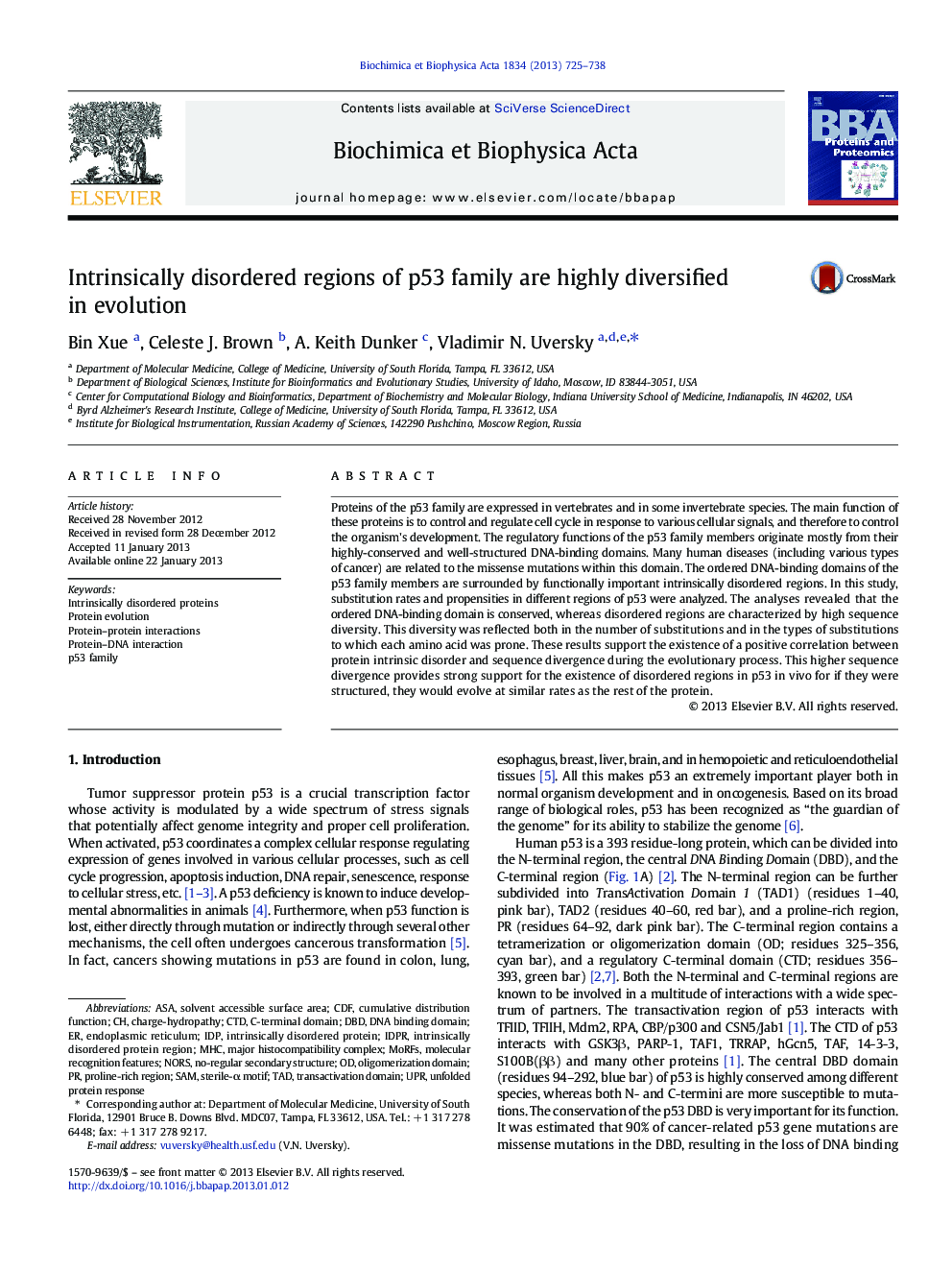| Article ID | Journal | Published Year | Pages | File Type |
|---|---|---|---|---|
| 1178291 | Biochimica et Biophysica Acta (BBA) - Proteins and Proteomics | 2013 | 14 Pages |
Proteins of the p53 family are expressed in vertebrates and in some invertebrate species. The main function of these proteins is to control and regulate cell cycle in response to various cellular signals, and therefore to control the organism's development. The regulatory functions of the p53 family members originate mostly from their highly-conserved and well-structured DNA-binding domains. Many human diseases (including various types of cancer) are related to the missense mutations within this domain. The ordered DNA-binding domains of the p53 family members are surrounded by functionally important intrinsically disordered regions. In this study, substitution rates and propensities in different regions of p53 were analyzed. The analyses revealed that the ordered DNA-binding domain is conserved, whereas disordered regions are characterized by high sequence diversity. This diversity was reflected both in the number of substitutions and in the types of substitutions to which each amino acid was prone. These results support the existence of a positive correlation between protein intrinsic disorder and sequence divergence during the evolutionary process. This higher sequence divergence provides strong support for the existence of disordered regions in p53 in vivo for if they were structured, they would evolve at similar rates as the rest of the protein.
Graphical abstractFigure optionsDownload full-size imageDownload high-quality image (224 K)Download as PowerPoint slideHighlights► Evolutionary conservation of the p53 family members is analyzed. ► The ordered DNA-binding domain of p53 is evolutionary conserved. ► p53 disordered regions are characterized by high sequence diversity. ► In evolution, intrinsic disorder and sequence divergence are positively correlated. ► This provides strong support for the existence of disordered regions in p53 in vivo.
